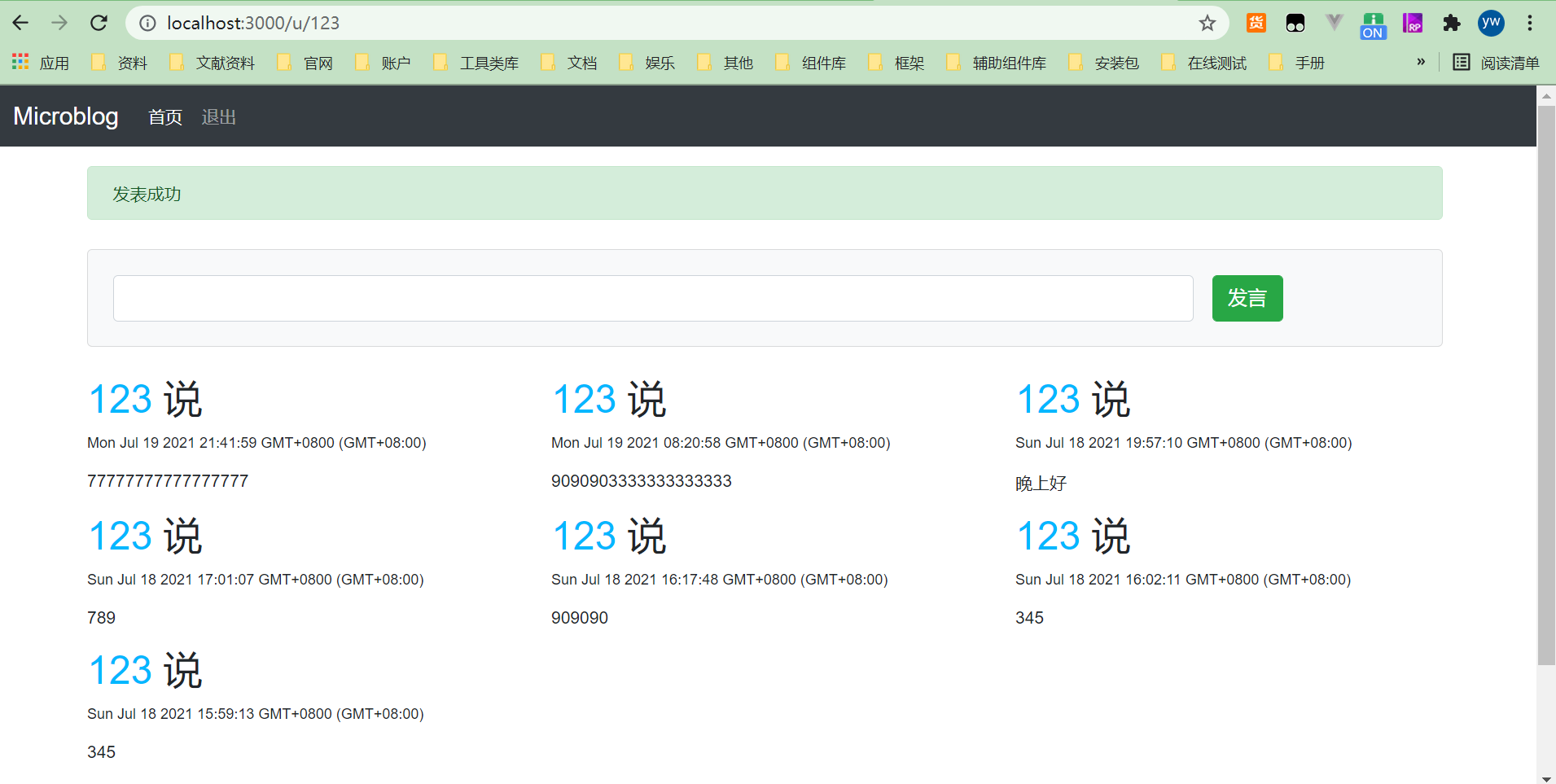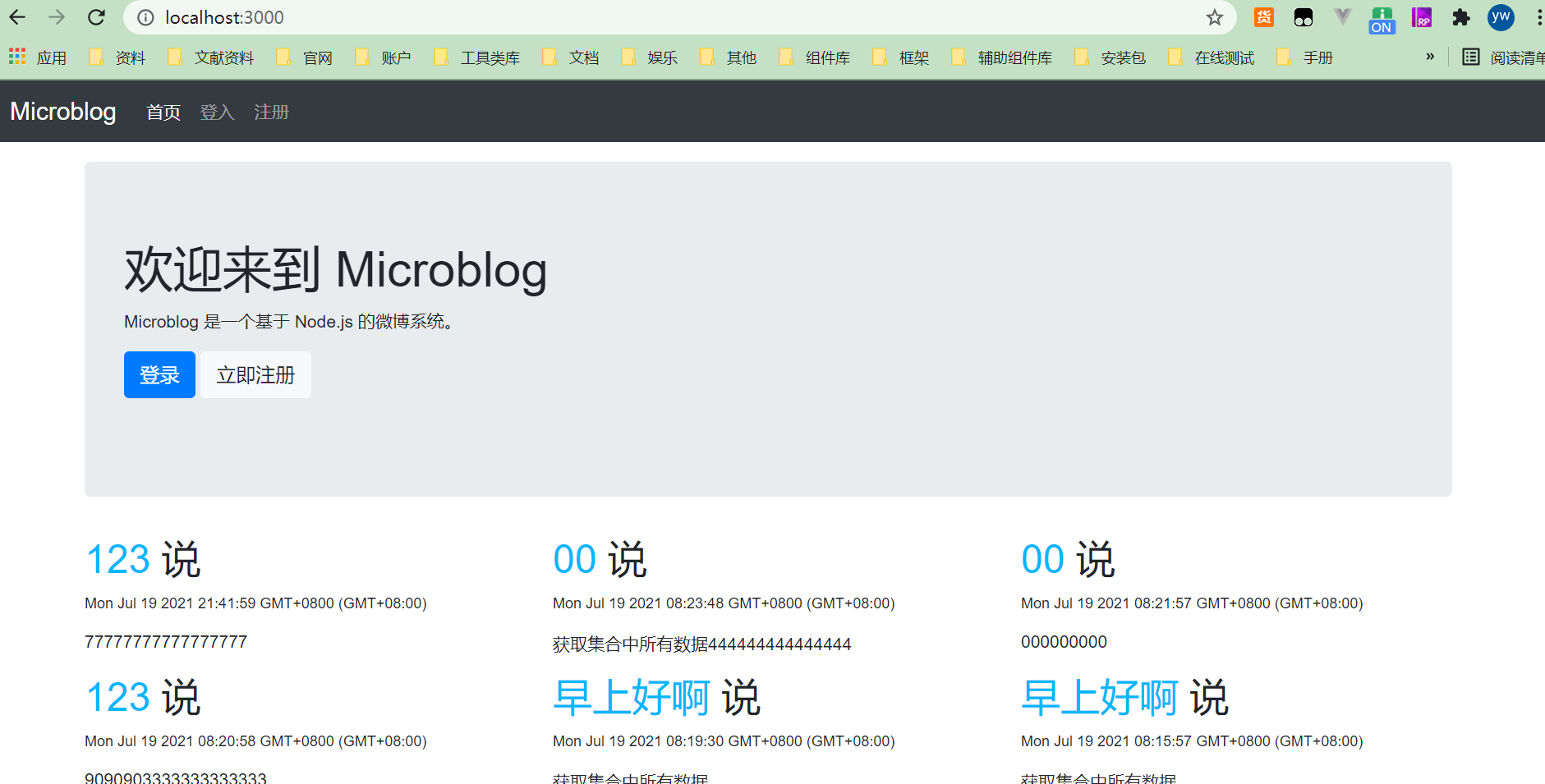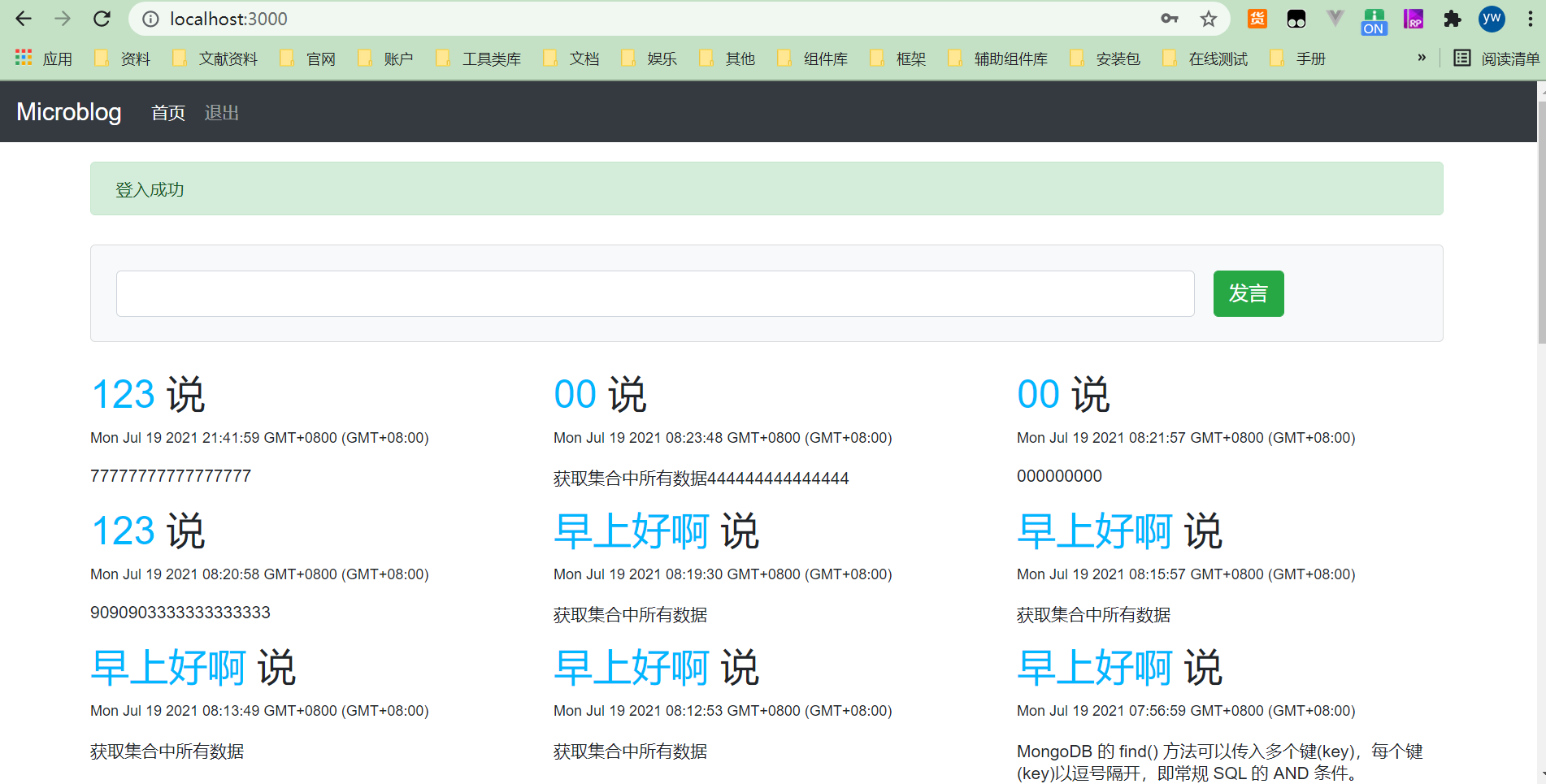发表微博
网站已经具备了用户注册、登入、页面权限控制的功能,这些功能为网站最核心的部分——发表微博做好了准备。在这个小节里,我们将会实现发表微博的功能,完成整个网站的设计。
# 微博模型
仿照用户模型,将微博模型命名为 Post 对象,它拥有与User 相似的接口,分别是get 和 save。get 的功能是从数据库中获取微博,可以按指定用户获取,也可以获取全部的内容。save是 Post 对象实例的方法,用于将对象的变动保存到数据库。
创建 models/post.js,写入以下内容:
const mongodb = require('./db');
class Post {
constructor(username, post, time) {
this.user = username;
this.post = post;
if (time) {
this.time = time;
} else {
this.time = new Date();
}
}
save() {
return new Promise((resolve, reject) => {
// 存入 Mongodb 的文档
const post = {
user: this.user,
post: this.post,
time: this.time,
};
mongodb.open().then((db) => {
// 读取 posts 集合
const postsCollection = db.collection('posts');
console.log(post);
postsCollection.insertOne(post, (err, posts) => {
if (err) throw new Error(err);
console.log('保存成功:' + JSON.stringify(post));
mongodb.close();
resolve(posts)
});
});
})
}
static find(name) {
return new Promise((resolve, reject) => {
mongodb.open().then(function (db) {
// 读取 posts 集合
const query = {};
if (name) {
query.user = name
}
const postsCollection = db.collection('posts');
postsCollection.find(query, { sort: { _id: -1 } }).toArray(function (err, docs) {
if (err) {
mongodb.close();
return reject(err)
}
// 封装 posts 为 Post 对象
const posts = [];
docs.forEach(function (doc, index) {
posts.push(new Post(doc.user, doc.post, doc.time));
});
mongodb.close();
resolve(posts)
});
});
})
}
}
module.exports = Post;
2
3
4
5
6
7
8
9
10
11
12
13
14
15
16
17
18
19
20
21
22
23
24
25
26
27
28
29
30
31
32
33
34
35
36
37
38
39
40
41
42
43
44
45
46
47
48
49
50
51
52
53
54
55
56
57
58
59
60
61
62
# 发表微博
在 routes/index.js 中添加下面的代码:
// 发言
router.post('/post', (req, res) => {
const { name } = req.session.user;
const post = new Post(name, req.body.post);
post.save().then(() => {
req.flash('success', '发表成功');
res.redirect(`/u/${name}`);
}).catch((err) => {
req.flash('error', err);
return res.redirect('/');
});
});
2
3
4
5
6
7
8
9
10
11
12
通过 req.session.user 获取当前用户信息,从 req.body.post 获取用户发表的内容,建立 Post 对象,调用 save() 方法存储信息,最后将用户重定向到用户页面。
# 用户页面
用户页面的功能是展示用户发表的所有内容,在routes/index.js中加入以下代码:
// 获取登录用户的所有发言数据
router.get('/u/:user', (req, res) => {
const { user } = req.params;
User.find({ name: user }).then((result) => {
if (result) {
Post.find(result.name).then((posts) => {
res.render('user', {
title: result.name,
posts: posts,
});
}).catch(err => {
req.flash('error', err);
return res.redirect('/');
});
} else {
req.flash('error', '用户不存在');
return res.redirect('/');
}
}).catch(() => {
req.flash('error', '用户不存在');
return res.redirect('/');
});
});
2
3
4
5
6
7
8
9
10
11
12
13
14
15
16
17
18
19
20
21
22
23
它的功能从数据库中获取该用户的微博,通过 posts 属性传递给 user 视图。 views/user.ejs 的内容如下:
<% if (user) { %>
<%- include('say') %>
<% } %>
<%- include('posts', { posts: posts }) %>
2
3
4
根据 DRY 原则,把重复用到的部分都提取出来,分别放入 say.ejs 和 posts.ejs。 say.ejs的功能是显示一个发表微博的表单,它的内容如下:
<div class="card bg-light mt-4 mb-4">
<div class="card-body">
<form method="post" action="/post">
<div class="form-grou row">
<div class="col-sm-10">
<input type="text" class="form-control" name="post">
</div>
<button type="submit" class="btn btn-success">发言</button>
</div>
</form>
</div>
</div>
2
3
4
5
6
7
8
9
10
11
12
posts.ejs 的目的是按照行列显示传入的 posts 的所有内容:
<% posts.forEach(function(post, index) { %>
<% if (index % 3 === 0) { %>
<div class="row">
<% } %>
<div class="col-4">
<h2><a href="/u/<%= post.user %>"><%= post.user %></a> 说</h2>
<p><small><%= post.time %></small></p>
<p><%= post.post %></p>
</div>
<% if (index % 3 === 2) { %>
</div>
<% } %>
<% }) %>
<% if (posts.length % 3 !== 0) { %>
</div><!-- end row -->
<%} %>
2
3
4
5
6
7
8
9
10
11
12
13
14
15
16
完成上述工作后,重启服务器。在用户的页面上发表几个微博,然后可以看到用户页面的效果如图所示。

# 首页
最后一步是实现首页的内容。我们计划在首页显示所有用户发表的微博,按时间从新到旧的顺序。
在 routes/index.js 中添加下面代码:
// 首页
router.get('/', (req, res) => {
Post.find(null).then((posts) => {
res.render('index', {
title: '首页',
posts,
});
})
});
2
3
4
5
6
7
8
9
它的功能是读取所有用户的微博,传递给页面 posts 属性。接下来修改首页的模板index.ejs:
<% if (!user) { %>
<div class="jumbotron bd-example">
<h1>欢迎来到 Microblog</h1>
<p>Microblog 是一个基于 Node.js 的微博系统。 </p>
<p>
<a class="btn btn-primary" href="/login" role="button">登录</a>
<a class="btn btn-light" href="/reg" role="button">立即注册</a>
</p>
</div>
<% } else { %>
<%- include('say') %>
<% } %>
<%- include('posts', { posts: posts }) %>
2
3
4
5
6
7
8
9
10
11
12
13
下面看看首页的效果吧,分别是用户登入之前和登入以后看到的首页效果。


# 下一步
到此为止,微博网站的基本功能就完成了。这个网站仅仅是微博的一个雏形,距离真正的微博还有很大的距离。例如,我们没有对注册信息进行完整的验证,如用户名的规则,密码的长短等。作为社交工具,最重要的用户关注、转帖、评论、圈点用户这些功能都没有实现。
